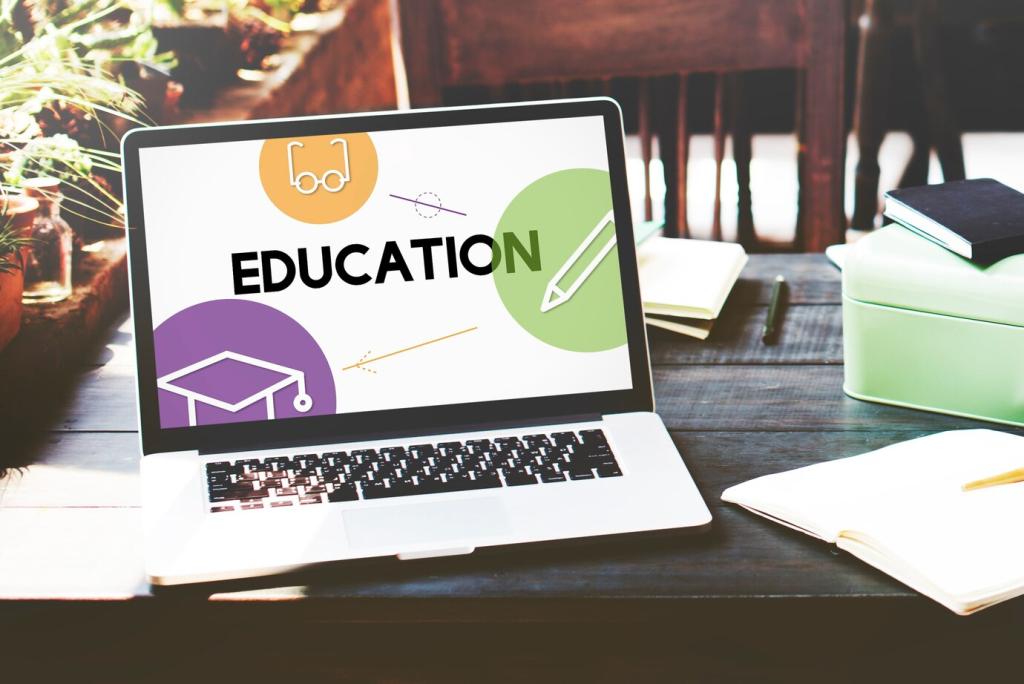Digital Skills Development for Students and Educators
Chosen theme: Digital Skills Development for Students and Educators. Welcome to a home base for practical strategies, energizing stories, and proven tools that grow digital confidence, creativity, and citizenship. Dive in, add your voice, and subscribe to learn, share, and build future-ready classrooms together.

Smart Searching and Credible Sources
Teach students to plan a question, try multiple search operators, triangulate sources, and keep concise notes with citations. Model how to read laterally, check publication dates, and verify author credentials before trusting information that will shape assignments, presentations, or public-facing projects. Share your favorite source-check tip in the comments.
Media and Data Sensemaking
Practice decoding charts, captions, and image edits to spot bias or manipulation. Have learners remix datasets into clear visuals, explain their design choices, and reflect on how different representations shift meaning, audience impact, and ethical responsibilities in academic work. Subscribe for a free data-literacy mini-guide.
The Everyday Digital Toolbelt
Build fluency with cloud storage, version history, file naming conventions, and accessibility features. Quick wins like keyboard shortcuts, templates, and voice typing reduce friction, freeing cognitive load for deeper reasoning, creative expression, and confident collaboration across courses. Share one shortcut your class now swears by.

Integrating Technology into Purposeful Lessons
Move beyond digitized worksheets by using the SAMR lens to redesign tasks for collaboration and authenticity. Substitute when it saves time, augment with comments, modify with multimedia co-creation, and redefine by connecting learners with real audiences. Post a lesson you want to upgrade—we’ll brainstorm together.
Project-Based Learning and Digital Creativity
Students plan, storyboard, and iterate on podcasts, short videos, or interactive explainers. They credit images, use openly licensed assets, and reflect on audience needs. Educators model critiques that are kind, specific, and helpful. Want our storyboard template? Subscribe and we’ll send it this week.


Project-Based Learning and Digital Creativity
A ninth grader, Jamal, mapped local microclimates using spreadsheets and a low-code mapping tool, then presented ideas for shade and water capture to the council. His project fused math, science, and advocacy, turning digital skills into civic impact. What community question could your class explore next?
Digital Citizenship, Safety, and Wellbeing
Privacy Basics Made Practical
Normalize password managers, multifactor authentication, and privacy checkups. Run quick phishing simulations and discuss red flags in subject contexts. Have students document settings they adjusted and the rationale. Educators: share your favorite privacy mini-lesson and we’ll compile a community toolkit.
Kindness, Consent, and Community
Co-create norms for respectful replies, citation of peers’ ideas, and consent before recording or posting. When conflict arises, use structured prompts to repair harm and rebuild trust. Students learn that digital communities are real communities. What routine anchors your classroom culture online?
Healthy Habits and Accessibility
Model focus modes, break timers, and ergonomic check-ins alongside captioning, color contrast, and screen-reader testing. Healthy, accessible workflows help every learner flourish, especially those using assistive technologies. Subscribe for our classroom-friendly wellbeing checklist and share a habit that works for you.
Micro-polls, exit tickets, and collaborative whiteboards surface misconceptions in minutes. Visual heat maps and comment threads reveal patterns so you can regroup, reteach, or extend. Ask students to predict class trends, then compare—building metacognition alongside skills. What tool best fits your workflow?
